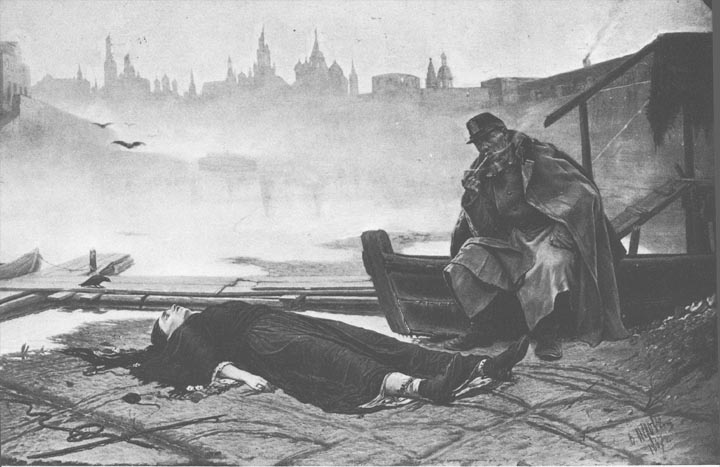
The Drowned Woman by Vassily Grigorievich Perov. 1867. Oil on canvas, 26 3/4 x 42 3/4 inches. Tretyakov Gallery, Moscow
In the Romantic period, in the wake of Goethe's Werther, ill-fated love afflicted many young people even to the extent of sometimes making them choose suicide; the Realist period, by contrast, sets out to shed light on the social aspects of relations between man and woman. This step was not unmotivated by didactic considerations. Any imprudent or unfortunate liaison exposed the girl or wife to public opprobrium. Perov's The Drowned Woman gives us a feeling of the tragic circumstances which could have led this young working-class woman to such a frightful end. Whatever her motive may have been, society has neither pity nor indulgence for her. Having dragged her from the river, the constable has seated himself beside her body, and is quietly smoking his pipe as if he saw nothing out of the ordinary in her fate. — Aleksa Celebonovic, p. 134
[A British analogue: G. F. Watts's Found Drowned]
References
Celebonovic, Aleksa. Some Call it Kitsch: Masterpieces of Bourgois Realism. Trans. Peter Willis. New York: Harry N. Abrams, [1974?].
Last modified 16 October 2006